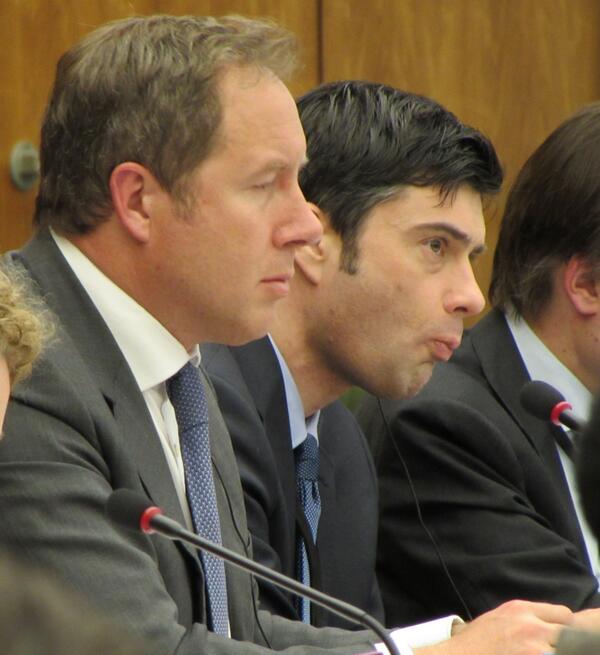On Wednesday, 11 March 2015, Oliver Hall-Allen, First Counsellor, Delegation of the European Union to the United Nations Office in Geneva delivered the following statement in response to the presentation of the Special Rapporteur in the Field of Cultural Rights (Farida Shaheed) on her Report on Copyright policy and the right to science and culture (A/HRC/28/57).

Oliver Hall-Allen (blue tie, white shirt), First Counsellor, Delegation of the European Union to the United Nations Office in Geneva
In relation to copyright limitations and exceptions, European Union noted that the “EU and individual EU MS a wide-ranging system of E& L integrated in domestic laws. This has been clearly demonstrated in the recent study prepared by Professor Kenneth Crews which has been extensively discussed in WIPO framework.”
With respect to the international level, the European Union noted that,
[T]he EU calls for the protection of author’s rights protection to make innovation and creation sustainable, to strengthen cultural and creative industries, and to support economic growth and development.
We note that one recommendation calls for the adoption of international instrument on copyright exceptions and limitations for libraries and archives. While the EU and its MS are not willing to consider a legally binding instrument in this area, we believe that there is a role for WIPO to work on this subject taking into account the existing flexibilities at the national, regional and international level.
The statement in full follows below.
UNITED NATIONS HUMAN RIGHTS COUNCIL
28th session
Clustered Interactive Dialogue on the Report of the Special Rapporteur
in the field of cultural rights on
“Copyright policy and the right to science and culture”11 March 2015
EU InterventionThe European Union would like to thank the Special Rapporteur, Ms Farida Shaheed, for her Report on the relation between copyright law and policy and the right to science and culture.
We were surprised to see that the Report has not taken into account many comments from MS and relevant stakeholders, which would ensure more balance.
The EU attaches great importance to promoting cultural rights, to fostering science and innovation, and to a solid copyright system which acts as a spur to the creative process. These objectives are complementary and mutually reinforcing. As is recalled in the Report, the right of science and culture and the protection of intellectual property are often enshrined side by side in various international human rights documents.
Copyright is fundamental to creation, and as such plays an essential role in human development. It provides the necessary reward and incentive for those that stand at the heart of the creative process, advancing the sum of human understanding to the benefit of all.
The EU considers that complementarity should be the guiding principle for our discussions on the relation between science, culture and copyright and the different stakeholders involved.
The EU and individual EU MS a wide-ranging system of E& L integrated in domestic laws. This has been clearly demonstrated in the recent study prepared by Professor Kenneth Crews which has been extensively discussed in WIPO framework.
At the international level, the EU calls for the protection of author’s rights protection to make innovation and creation sustainable, to strengthen cultural and creative industries, and to support economic growth and development.
We note that one recommendation calls for the adoption of international instrument on copyright exceptions and limitations for libraries and archives. While the EU and its MS are not willing to consider a legally binding instrument in this area, we believe that there is a role for WIPO to work on this subject taking into account the existing flexibilities at the national, regional and international level.
What were the positive effects of a strong copyright system on cultural development that you have identified in your research?